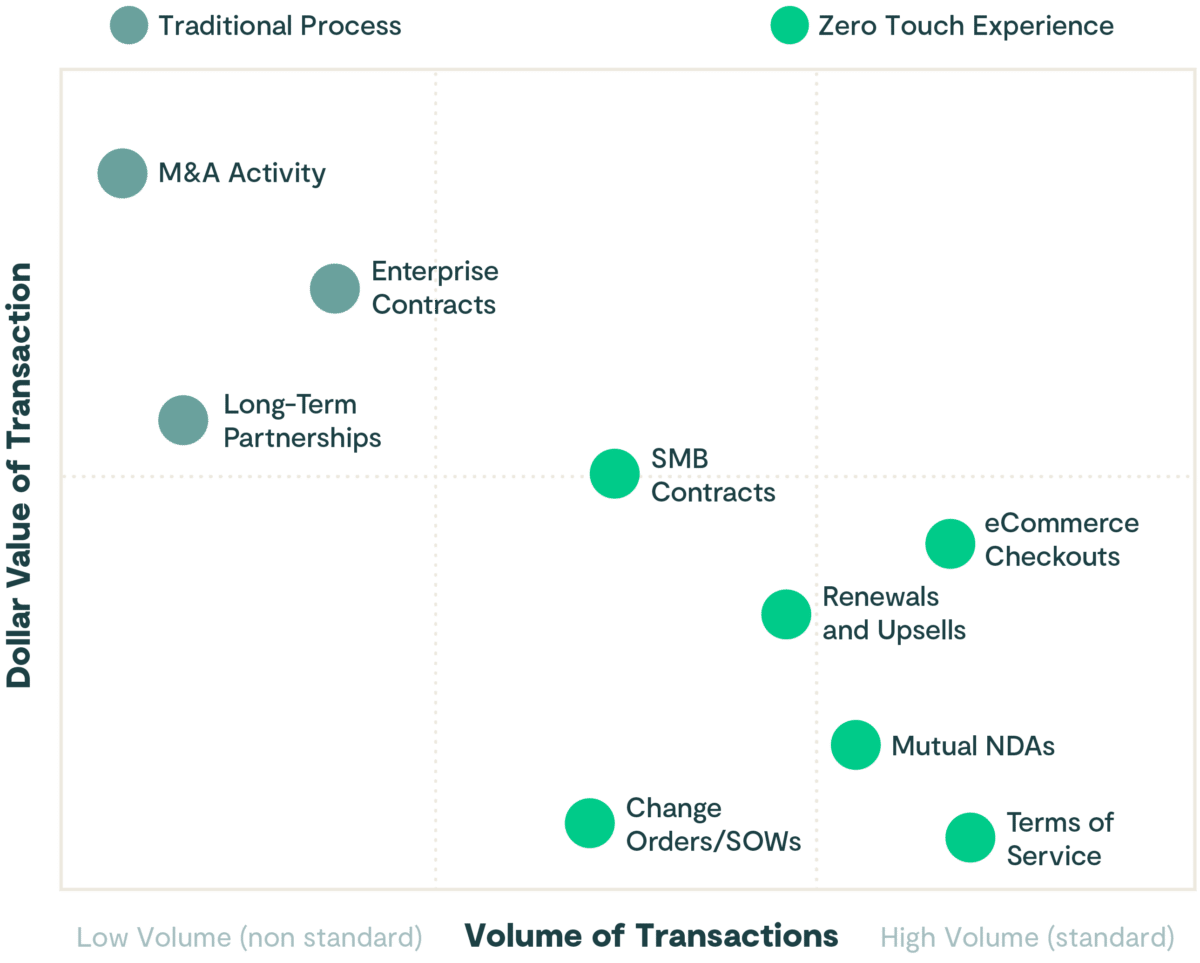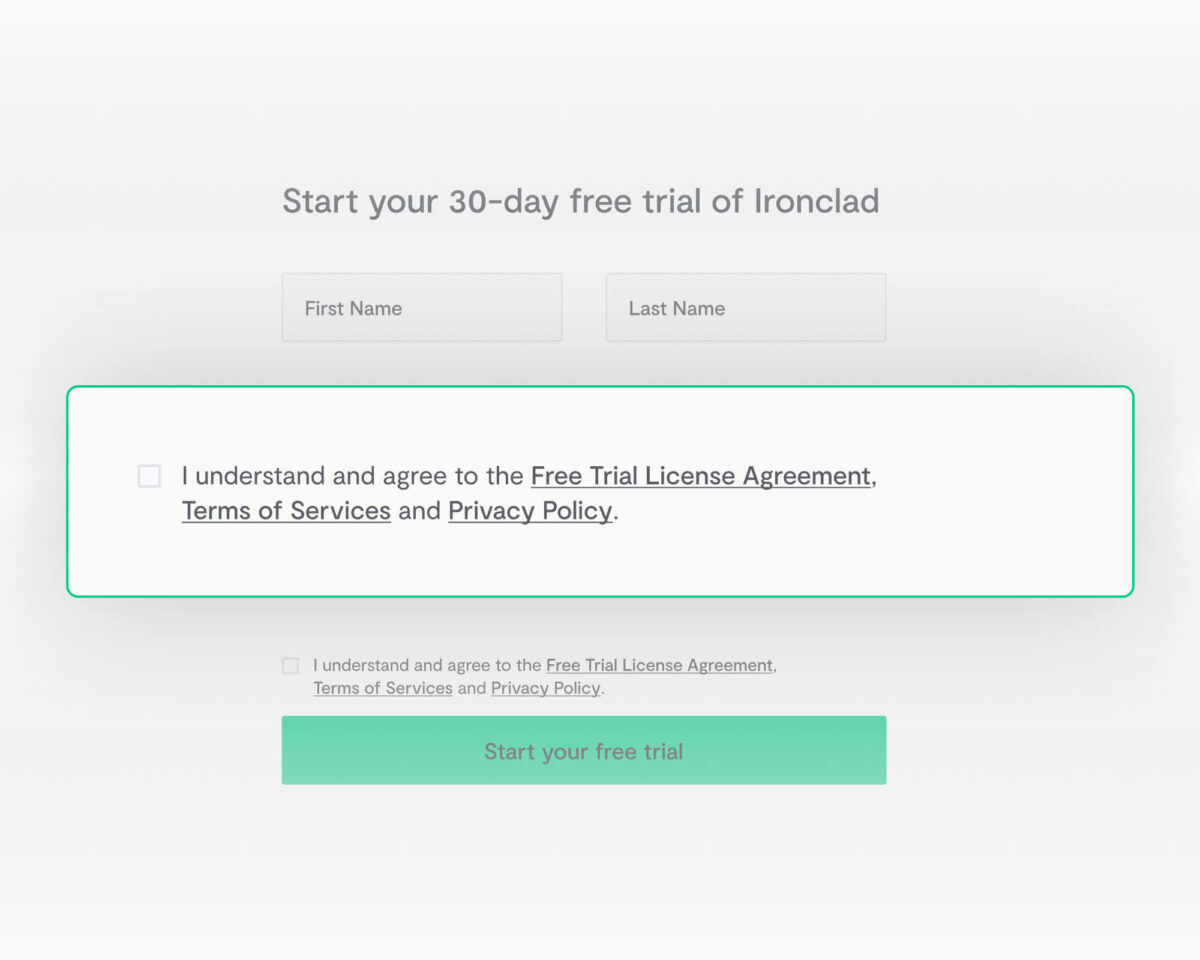There are many ways to accept a contract, but each type has a time and place for ideal use. An eSignature agreement, for example, may not be suitable for an everyday eCommerce transaction, but perfect for a high value M&A deal. The key to driving efficient contract workflows is both knowing which methods of acceptance to use and understanding the value of having multiple ways to sign a contract. This is very important to efficient contract management.
To understand the best application for each type of acceptance, one must first understand the fundamentals of the following three forms of acceptance: traditional eSignature, embedded signing, and clickwrap. We’ll break each of these down and help you understand how to design great experiences using any or all of these acceptance methods.
Traditional eSignature
For the purposes of this comparison, we define traditional esignature as contract acceptance facilitated by emailing or delivering a 1:1 contract – usually as a PDF, often signed by typing, stamping, or drawing your signature. This type of acceptance has been around for decades, and it is often used for non-standard, negotiated contracts that need some level of personalization.
Embedded signing
One step beyond traditional eSignature is embedded signing or API signing. This method of capturing acceptance allows your users to accept signature requests on your website or in your app, usually embedded via JavaScript. An embedded contract can speed up the signing process by eliminating the need to upload, send, and sign individual contracts via email.
Although a typed or drawn signature may still be required, embedded signing is a great option for presenting standardized contracts to a broad range of users to enhance their signing experience.
Clickwrap
With similar benefits to embedded signing – i.e faster acceptance, reduced redlining, and better user experience – clickwrap agreements are also a highly efficient way to accept certain types of agreements. Clickwrap agreements are also API driven and best used when the goal is to provide a fast, efficient signing experience for your customers or users.
However, unlike embedded signing, clickwrap is a one-click experience that reduces friction in critical processes such as signup flows and eCommerce checkouts. Clickwrap agreements are considered the gold standard for agreements such as website Terms and Conditions, privacy policies, or EULAs, but are less likely to be used in place of traditional eSignature.
Questions to ask when deciding the best contract acceptance method for documents
When deciding which type(s) of acceptance to use in your business’ workflow, here are a few key questions to ask yourself:
- How many times will this document be signed in a year?
- Will this document be the same each time it is signed (standard) or will the terms and text change frequently (non-standard)?
- What is the value of this agreement? Is it worth redlining or do I want a “take it or leave it” kind of contract?
- Would our business benefit from allowing this contract to be signed within our website or mobile app?
- Will the volume of agreements be cost prohibitive for traditional eSignature? That is, can I save money with embedded signing or clickwrap?
The following graphic should help you further identify which signing methods are best for your organization. Once you’ve asked yourself these questions, you might find that you will need all three, each at different times. You might then find that an all-in-one solution is best for your needs.
Next steps
If you’re still not sure what acceptance methods are right for your business, that’s ok! Ironclad’s team of legal and contract solutions consultants are well versed in designing optimized contract workflows for businesses of all types. Take a tour of our contract acceptance platform or request a consultation.
Ironclad is not a law firm, and this post does not constitute or contain legal advice. To evaluate the accuracy, sufficiency, or reliability of the ideas and guidance reflected here, or the applicability of these materials to your business, you should consult with a licensed attorney. Use of and access to any of the resources contained within Ironclad’s site do not create an attorney-client relationship between the user and Ironclad.
- Traditional eSignature
- Embedded signing
- Clickwrap
- Questions to ask when deciding the best contract acceptance method for documents
- Next steps
Want more content like this? Sign up for our monthly newsletter.




